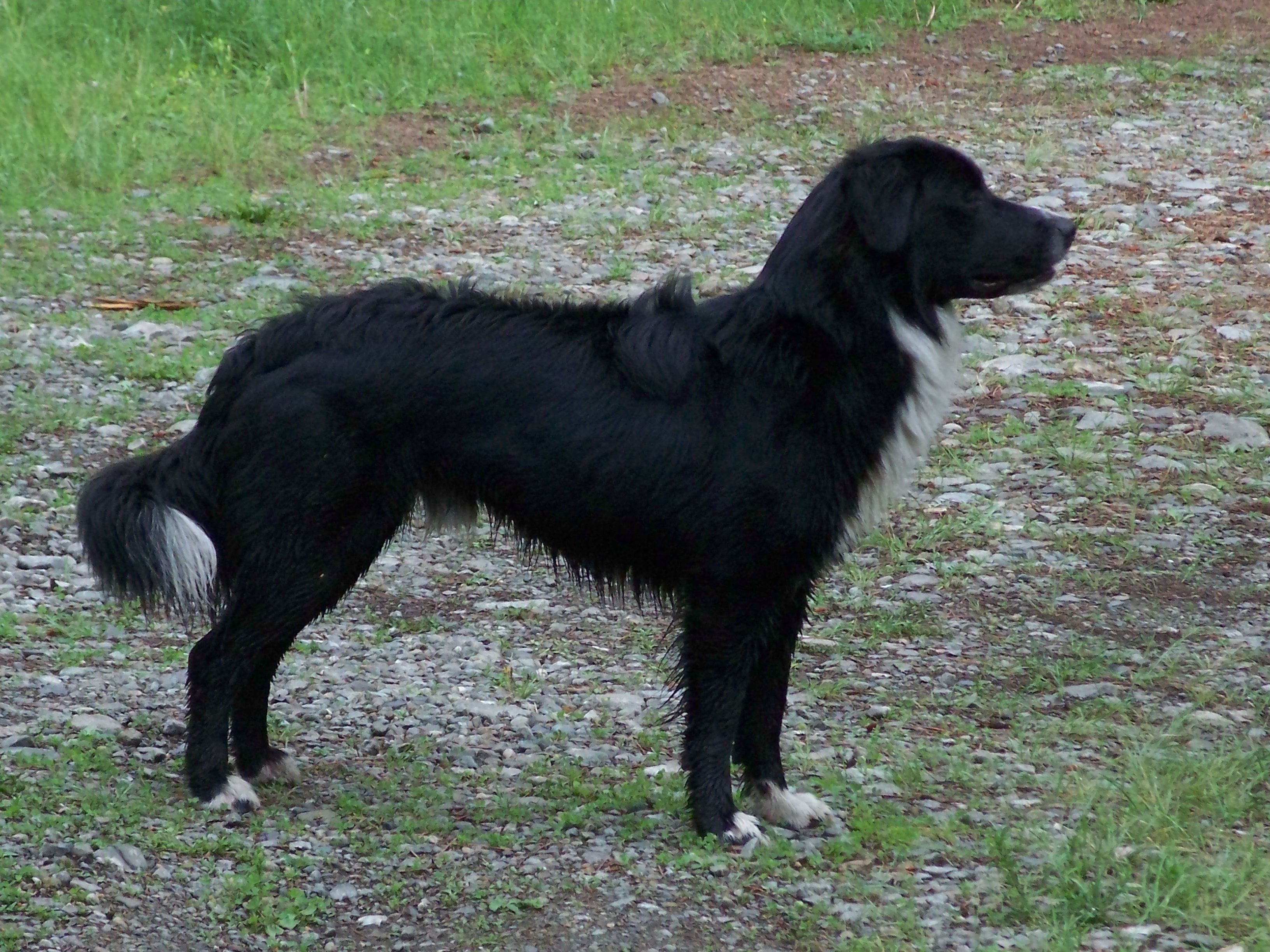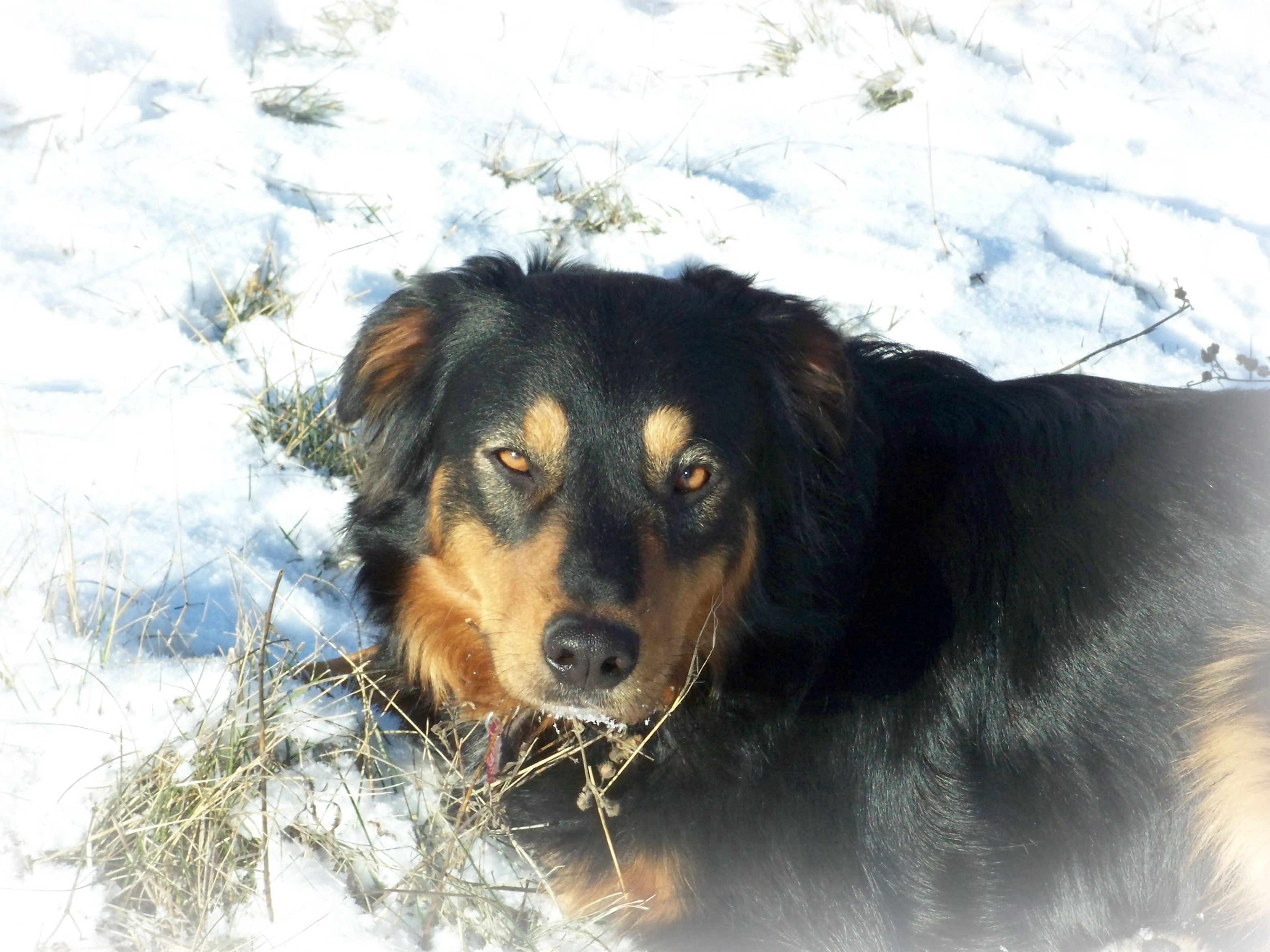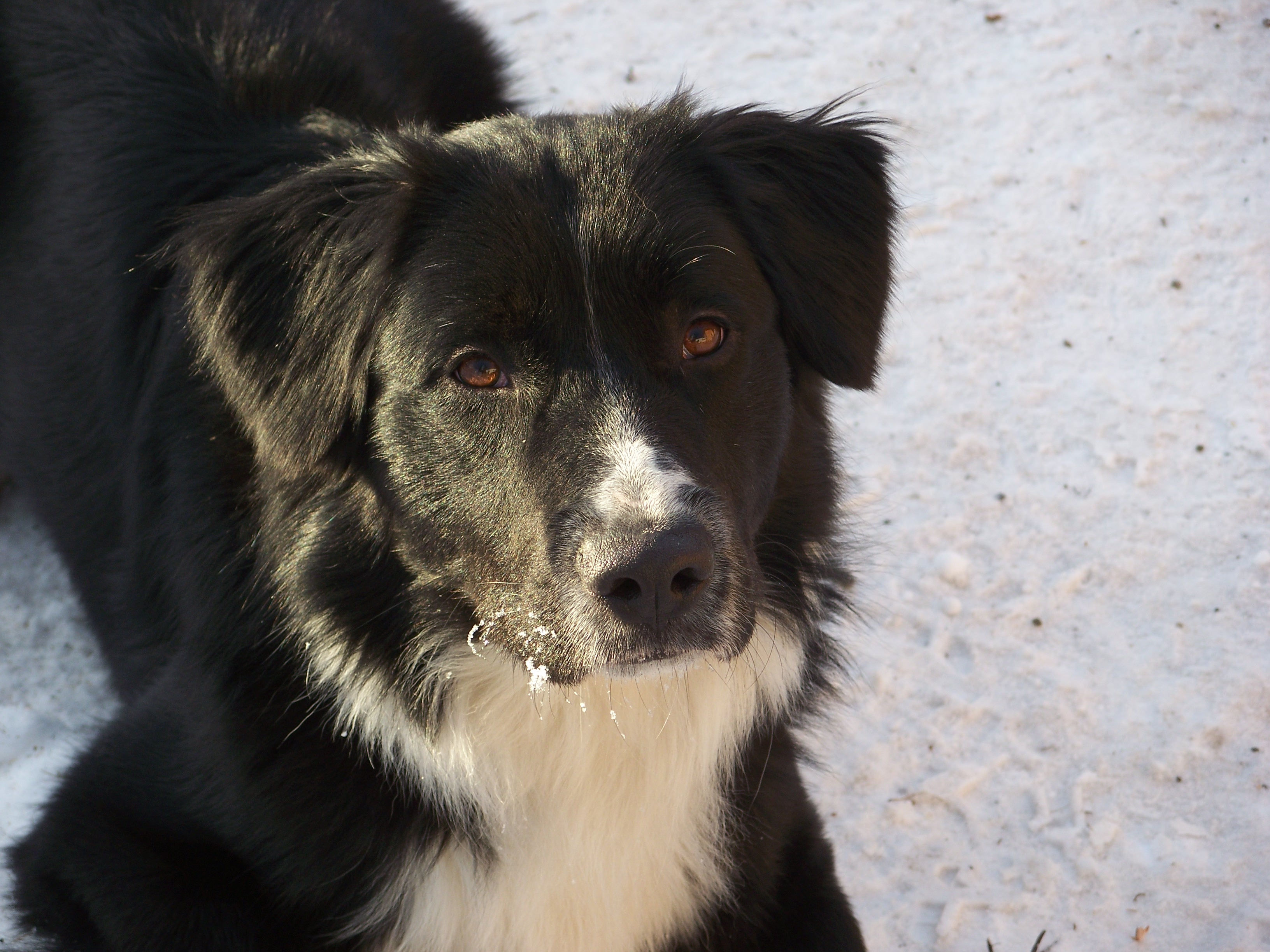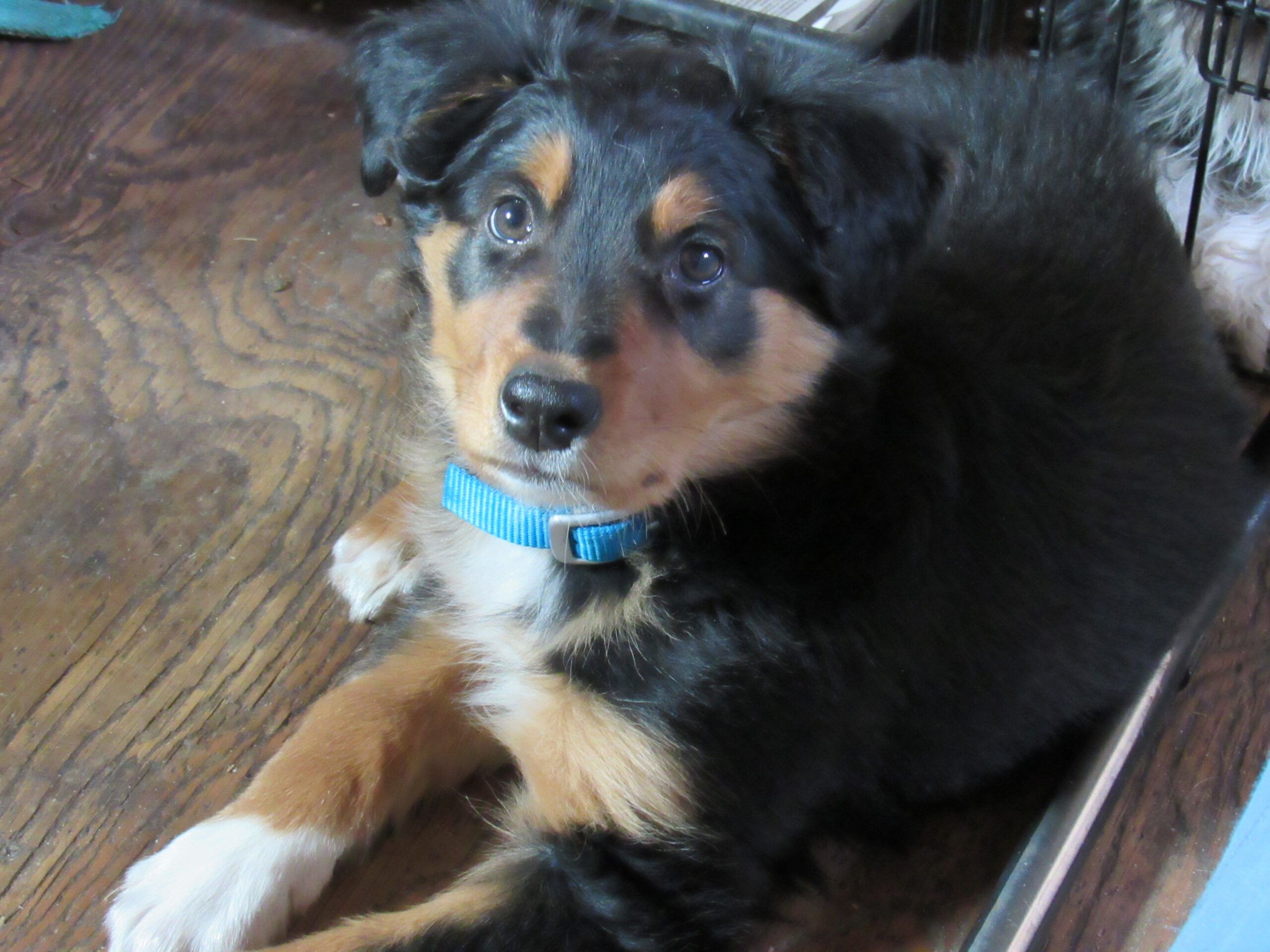By Krystal Beers
This article contains our personal expanded view of the English Shepherd Standard. It is based on our research and experience breeding various species of rare heritage animals for conservation; and should not be misunderstood as being directed at individual persons.
There is a set of standards for most things – from dogs to roses to whiskey – even moral standards one does well to live by. When one responsibly breeds quality animals of any species, standards are the benchmark strived for.
Some debate usually goes along with any set of standards. The English Shepherd community is no exception. ‘Is this coloration acceptable in the Standard? Is this eye color? What about size?’ In a recent issue of the breed club’s newsletter there was a commendable article discussing the English Shepherd breed Standard.
What exactly is a standard? One definition is: “something established by authority, custom or general consent as a model, or example; criterion.” Well, that’s pretty straightforward. The breed Standard set forth for English Shepherds is what all breeders should aim to achieve. Really, it’s the quality we should all be held up to. In so doing, it is extremely helpful to take a look back in time for good examples of the dogs to imitate. What were breeders long ago producing? What were their breeding goals?
The increased frequency of English Shepherds with a blue “watcheye” and “excessive white” has been noted. Were there dogs matching those descriptions 90 years ago? And does it really matter? For one thing, blue eyes cannot take the sun’s glare like brown eyes can. With such an outdoor-loving dog still relied upon for help on the surging numbers of small farms, how kind it is to minimize any discomfort if possible. Besides, none of us want our breed to get confused as some sort of cross any more than it already does! What does the Standard say? “Eyes: Brown…” The blue eye may be a recessive gene that pops up, but why breed specifically for it? Wouldn’t it be better to stick to the Standard and select breeding dogs that do not carry the gene?
The excessive white factor goes much deeper, however. In other breeds the gene causing this is called “lethal white” and it can mean blindness or deafness. At the very least, less skin pigment can result in a stronger tendency toward sunburn even in winter. Ever heard the term “collie nose”? Even dogs with a moderate amount of white on their muzzle are prone to sunburn. The excessive white gene has not been observed in the English Shepherd long enough to know if it will lead to health problems for our breed, too. The ESC Breeders’ Directory quotes the Standard on white: “In none of the color patterns is white permitted to be unbalanced to a degree of being splotchy-looking or of covering more than 30% of the body. Solid white coats or piebald markings are not desirable.” There are consequences to perpetuating out-of-Standard traits. Proceed with caution.
While the Standard is silent about the brindle gene, historically it’s known that it comes exclusively through the Guy Wilson line. However, Mr. Guy (as he was known) bred away from it.
Let’s look at the definition of standard again. It seems that whenever authority enters into any picture there are ones who will criticize and resist it. So in this case, who is the “authority” that set the English Shepherd Standards, and what right did they have to do so? Folks, this would be the breeders nearly a century ago to whom we all owe a debt of gratitude for preserving the breed as we know it and setting forth guidelines for those who followed in their footsteps. One should not mind bowing to such authority! Take a close look at the marvelous dogs they produced. You can see them echoed in pedigree after pedigree today. There is an endearing variety of physical traits already within the ES breed; no need to reinvent the wheel.
Another definition for standard is: “something set up and established… as a rule for the measure of… quality.” We have a unique, highly versatile family/farmdog breed. In our estimation temperament is paramount, but well-bred dogs also need to be in top form structurally to perform their demanding jobs while also limiting physical injury. It is imperative that breeders educate themselves on structure! Imperative. Evaluate and then place puppies based on it equal to temperament. Those with excellent structure would go to working/sporting homes and could also add to the gene pool. Those lacking go to family homes where the physical demand is less, and not necessarily used for breeding. The Standard reads: “Body: Back is strong and level, loins strong and deep with slight muscular arch. Shoulders well laid back. Ribs well sprung and chest extending down in depth approximately to elbows. Body slightly longer than tall. Chest moderately broad. Legs: Forelegs straight when viewed from front. Pasterns short, thick, strong, but still flexible. Back legs well boned and muscled, placed well apart. Feet oval and compact, toes together and well arched, well-padded and tough.” There are books, video, breeders, show men and women, and seminars available to learn about structure. Placing puppies accordingly, yet striving to produce dogs sound and correct in structure in the first place, will minimize future heartache for new owners. There is no excuse not to become educated about structure. And every reason to do so!
Lastly, large or small, why should the size of our dogs matter? Back to the Standard we go: “Size: Height- 18 to 24 inches, preference for 19-22; Weight- 40 to 65 lbs., lean and fit condition; males larger than females.” Again, speaking from our view, size plays a part in job performance. A larger dog may have more presence with large livestock and as a family guardian; whereas a smaller dog may be easier on a small acreage with smaller animals. Although the size of many other breeds has been altered, the English Shepherd has a naturally occurring variety of sizes. There is wiggle room here, but let’s not carry it too far by breeding for a specific size. After all, variety is the spice of life!
We need to think about breeding English Shepherds according to their Standard objectively, not through rose-colored glasses based on personal preference alone or what attracts buyers. That is the quickest way to breed demise. Did out-of-Standard dogs occur in the 1920’s and ‘30’s? Certainly. It took steady, honest breeders with the good of the dog at heart many years to rebuild the breed after years of neglect and cross-breeding. Did any of those mixed dogs slip into the English Shepherd gene pool? Most likely. What we now know about genetics reveals that traits do not get diluted and finally disappear, but continue to pop up once in a while. We all do well to bear in mind that such recessive traits were bred away from in favor of the more standardized type of ES, as was later set forth in the breed Standard.
Are there any other benefits to breed according to the Standard? Yes! Think of all the people researching breeds for their next four-legged family addition. A long-time use of the Standard tells them general height and weight range, colors, temperament, and grooming needs. English Shepherds bred within the range of that model makes it easier for them to decide.
What about the growth of rescue efforts in the dog world? Our English Shepherd breed Standard plays an even more vital role in this area. When breed identity can mean the difference between life and death it is important for shelter workers to be able to identify a dog as an English Shepherd. Those who choose to ignore the Standard may not fully understand what could happen to their puppies later in life. The collective English Shepherd community needs to care!
We have the most versatile, adaptable dog breed in the world, in our humble opinion! If selective breeding for pet- or working-only homes continues we will lose that. Got cattle? Most ES will work cattle. Sheep? Same. Chickens, etc., etc., etc. True, one dog may be more suited to larger vs. smaller livestock, but just because an ES is a “working” dog does not mean it is high energy, high drive, and cannot work a variety of stock, plus when the work is done be content to lie on your feet (or lap!). Or conversely be a Service Dog to its disabled master or constant companion to a child or retired couple in the suburbs. English Shepherds are truly all that!
In the end, the English Shepherd breed Standard spells it all out for us. Let’s adhere to the Standard as the benchmark for exceptional dogs so the wonderfully unique breed we all adore will continue on for the enjoyment of many generations!







Leave A Comment